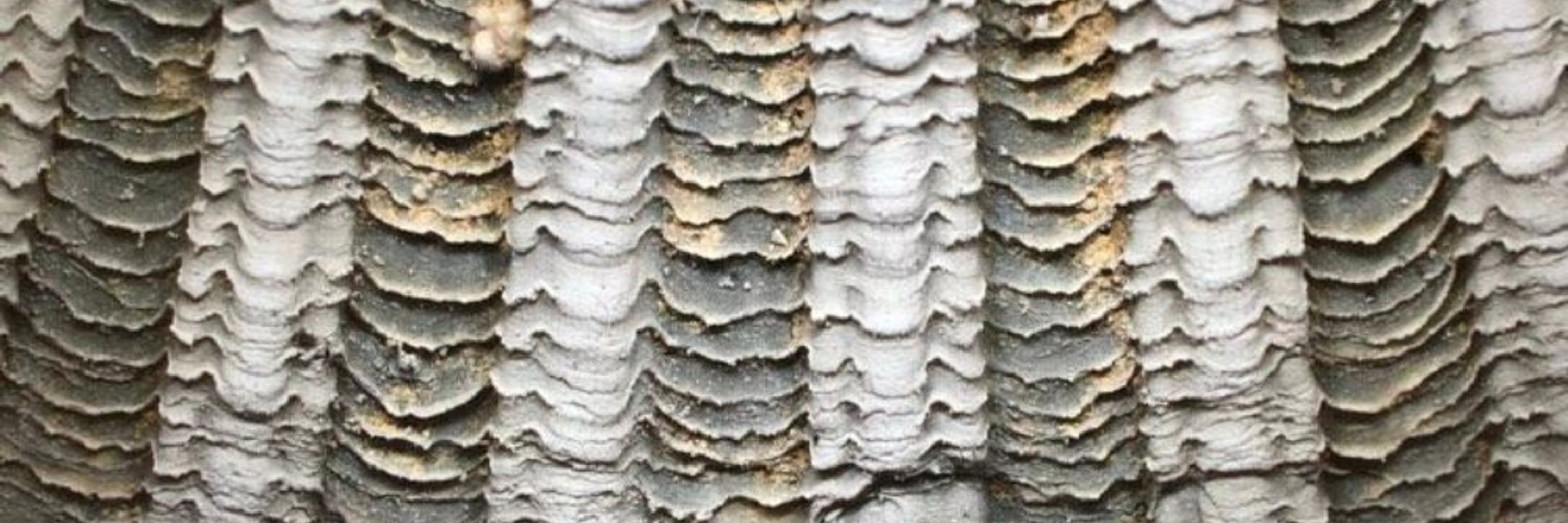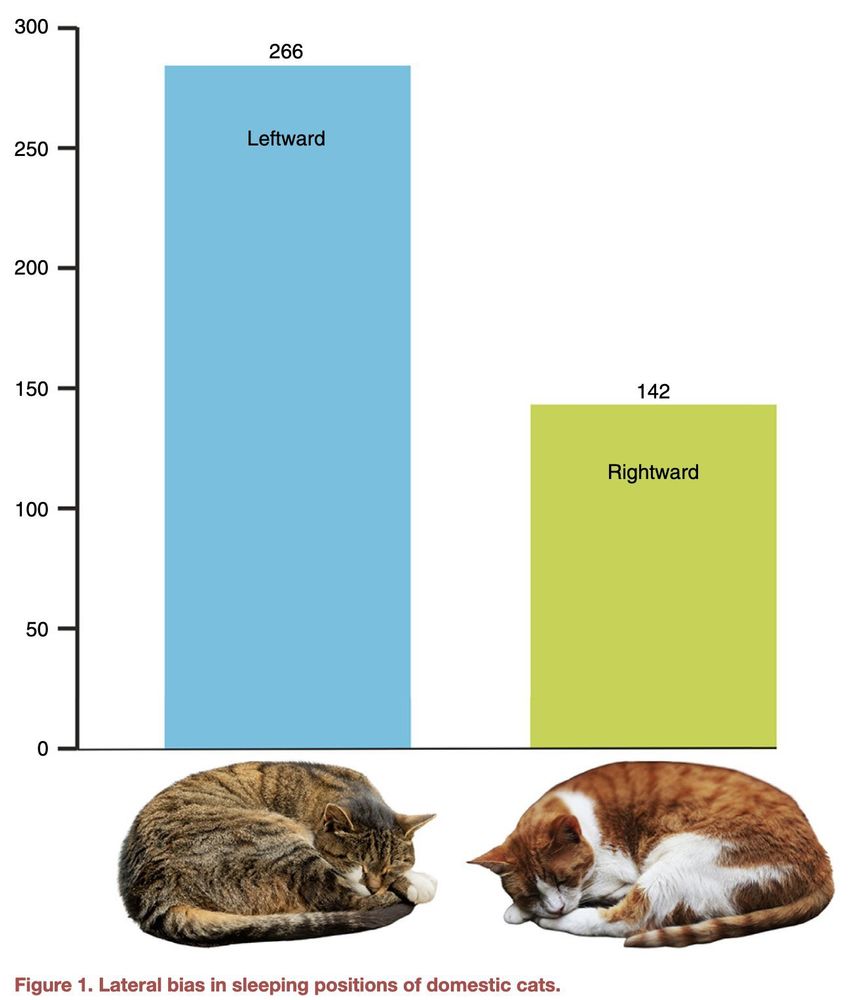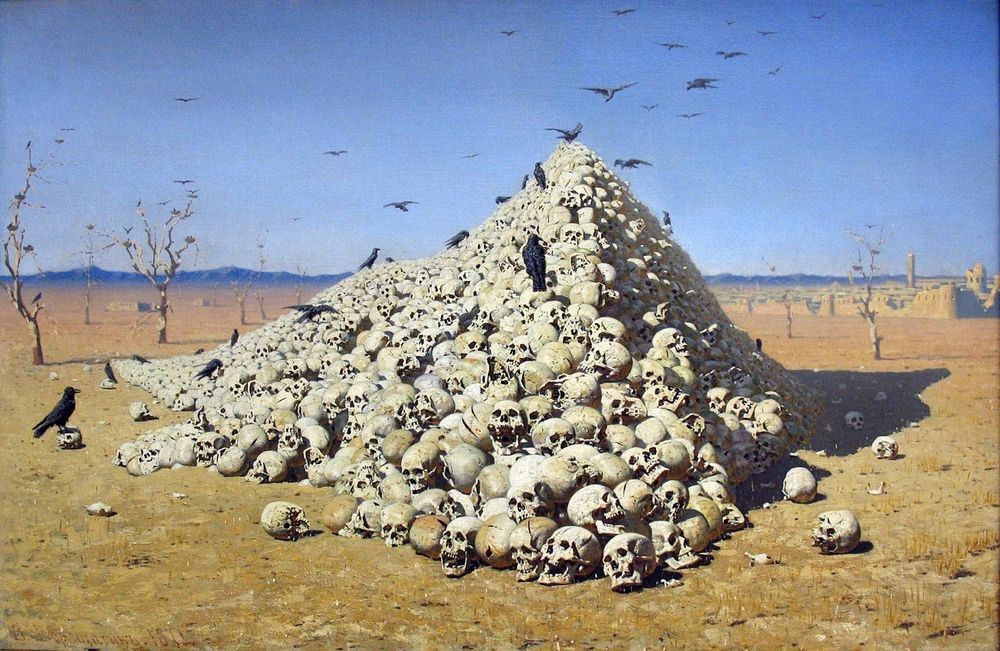
Jean-François Cudennec
@jfcudennec.bsky.social
PhD. Old mollusks lover : Sclerochronology and isotopes in archaeological or paleontological context.
#PaleoSky curator and limpet nerd.
Also nature photographer:
https://bsky.app/profile/jfcphotos.bsky.social
#PaleoSky curator and limpet nerd.
Also nature photographer:
https://bsky.app/profile/jfcphotos.bsky.social
Pinned

Limpet shell oxygen isotopes as markers of seasonality in shell middens: The case of Molène Archipelago (Brittany, France) from Late Neolithic to Early Middle Age
The stable oxygen isotopes ratio (δ18O) from marine mollusk carbonated shells is widely used as a palaeo-thermometer, as the main driver of this ratio…
www.sciencedirect.com
Fresh off the press and in open access !
Our latest paper investigates the seasonality of Atlantic shell middens, from the Neolithic to the Middle Ages. Not familiar with sclerochronology, and why it's cool ? A short thread !
#AcademicSky #PaleoSky 🧪
www.sciencedirect.com/science/arti...
Our latest paper investigates the seasonality of Atlantic shell middens, from the Neolithic to the Middle Ages. Not familiar with sclerochronology, and why it's cool ? A short thread !
#AcademicSky #PaleoSky 🧪
www.sciencedirect.com/science/arti...
Reposted by Jean-François Cudennec
We’ve uncovered a new species of snake! 🐍
Paradoxophidion richardoweni lived 37 million years ago and has a strange mix of features that suggest it's an early caenophidian, the group containing 80% of living snakes.
Discover what it reveals about snake evolution 👇
www.nhm.ac.uk/discover/new...
Paradoxophidion richardoweni lived 37 million years ago and has a strange mix of features that suggest it's an early caenophidian, the group containing 80% of living snakes.
Discover what it reveals about snake evolution 👇
www.nhm.ac.uk/discover/new...

“Weird” new species of ancient fossil snake discovered in southern England | Natural History Museum
An extinct snake named Paradoxophidion richardoweni has slithered its way out of obscurity.
www.nhm.ac.uk
November 10, 2025 at 4:11 PM
We’ve uncovered a new species of snake! 🐍
Paradoxophidion richardoweni lived 37 million years ago and has a strange mix of features that suggest it's an early caenophidian, the group containing 80% of living snakes.
Discover what it reveals about snake evolution 👇
www.nhm.ac.uk/discover/new...
Paradoxophidion richardoweni lived 37 million years ago and has a strange mix of features that suggest it's an early caenophidian, the group containing 80% of living snakes.
Discover what it reveals about snake evolution 👇
www.nhm.ac.uk/discover/new...
We're snailposting, post your snails !
November 10, 2025 at 9:05 AM
We're snailposting, post your snails !
Feeling down today ? Why don’t you just go to the lab and perform some destructive analysis on subfossil scallop from a Neolithic shell midden ?

November 5, 2025 at 9:48 AM
Feeling down today ? Why don’t you just go to the lab and perform some destructive analysis on subfossil scallop from a Neolithic shell midden ?
Reposted by Jean-François Cudennec

November 3, 2025 at 9:34 PM
You may like it or not, but this is what peak phylogenetic looks like

November 1, 2025 at 6:15 PM
You may like it or not, but this is what peak phylogenetic looks like
According to this paper in @currentbiology.bsky.social, two-thirds of cats prefer a leftward sleeping position.
Profound life lesson being taught here.
Profound life lesson being taught here.

October 30, 2025 at 9:16 PM
According to this paper in @currentbiology.bsky.social, two-thirds of cats prefer a leftward sleeping position.
Profound life lesson being taught here.
Profound life lesson being taught here.
Pleistocene dude saw the eye of a cat. 5 cyclone and immediatrely felt the urge to invent religions
October 27, 2025 at 9:53 PM
Pleistocene dude saw the eye of a cat. 5 cyclone and immediatrely felt the urge to invent religions
Reposted by Jean-François Cudennec
1/ It is Nobel week: the giants of world science gather beneath gilded halls of leading global institutions.
But what about those whose approach to knowledge is radically different? Those who base their science on lived experience, fragments from human worlds, often silent or marginal ?
But what about those whose approach to knowledge is radically different? Those who base their science on lived experience, fragments from human worlds, often silent or marginal ?

October 9, 2025 at 6:29 PM
1/ It is Nobel week: the giants of world science gather beneath gilded halls of leading global institutions.
But what about those whose approach to knowledge is radically different? Those who base their science on lived experience, fragments from human worlds, often silent or marginal ?
But what about those whose approach to knowledge is radically different? Those who base their science on lived experience, fragments from human worlds, often silent or marginal ?
Reposted by Jean-François Cudennec
#FossilFriday Not to be outdone by Isaac Newton who is buried beneath a gastropod fossil in Westminster Abbey, the famous geologist Charles Lyell’s gravestone is Carboniferous crinoidal limestone full of columnals of these ‘sea-lilies’.


October 24, 2025 at 6:06 AM
#FossilFriday Not to be outdone by Isaac Newton who is buried beneath a gastropod fossil in Westminster Abbey, the famous geologist Charles Lyell’s gravestone is Carboniferous crinoidal limestone full of columnals of these ‘sea-lilies’.
After a quick search, it appears that "Sally the pet seal" has never been mentioned on here Bluesky, so let me fill in this shocking oversight.
October 21, 2025 at 9:17 PM
After a quick search, it appears that "Sally the pet seal" has never been mentioned on here Bluesky, so let me fill in this shocking oversight.
Reposted by Jean-François Cudennec
Interested in fossils? Brains? Reptiles?
Want to study how reptile (particularly squamate) brains and senses changed over time?
Want to be part of an international team studying the evolution of cognition?
Then apply for our Univ of Edinburgh PhD project!
e5-dtp.ed.ac.uk/project?item...
Want to study how reptile (particularly squamate) brains and senses changed over time?
Want to be part of an international team studying the evolution of cognition?
Then apply for our Univ of Edinburgh PhD project!
e5-dtp.ed.ac.uk/project?item...

Project | E5 Doctoral Training Partnership | E5 Doctoral Training Partnership
The project advertisement
e5-dtp.ed.ac.uk
October 16, 2025 at 11:11 AM
Interested in fossils? Brains? Reptiles?
Want to study how reptile (particularly squamate) brains and senses changed over time?
Want to be part of an international team studying the evolution of cognition?
Then apply for our Univ of Edinburgh PhD project!
e5-dtp.ed.ac.uk/project?item...
Want to study how reptile (particularly squamate) brains and senses changed over time?
Want to be part of an international team studying the evolution of cognition?
Then apply for our Univ of Edinburgh PhD project!
e5-dtp.ed.ac.uk/project?item...
I spent an awkwardly absurd amount of time looking at this (small baleen whale from the Late Miocene of the Eastern Parathetys sea)
Some work out recently made, cetotherium riabinini is a small baleen whale from the Late Miocene of the Eastern Paratethys sea (Ukraine), a almost complete individual show it had remarkable body proportions unlike modern elongated species in a minuscule size.

October 15, 2025 at 9:22 AM
I spent an awkwardly absurd amount of time looking at this (small baleen whale from the Late Miocene of the Eastern Parathetys sea)
Wildlife Photographer of the Year awards are out !
And like every year, it's just a big "wow".
And like every year, it's just a big "wow".

October 15, 2025 at 8:58 AM
Wildlife Photographer of the Year awards are out !
And like every year, it's just a big "wow".
And like every year, it's just a big "wow".
Reposted by Jean-François Cudennec
Referring to global history during the 'Victorian era', but de-centering Europe:
The Meiji era of Japan lasted from 1868 to 1912.
So:
"Cowboys were roaming warrior-gunmen who managed cattle empires for the noble class in early Meiji-era America."
The Meiji era of Japan lasted from 1868 to 1912.
So:
"Cowboys were roaming warrior-gunmen who managed cattle empires for the noble class in early Meiji-era America."


October 14, 2025 at 8:40 PM
Referring to global history during the 'Victorian era', but de-centering Europe:
The Meiji era of Japan lasted from 1868 to 1912.
So:
"Cowboys were roaming warrior-gunmen who managed cattle empires for the noble class in early Meiji-era America."
The Meiji era of Japan lasted from 1868 to 1912.
So:
"Cowboys were roaming warrior-gunmen who managed cattle empires for the noble class in early Meiji-era America."
Reposted by Jean-François Cudennec
Left : The Apotheosis of War by Vasily Vereshchagin (1871)
Right : pile of buffalo skulls, Michigan Carbon Works, 1892. (Burton Historical Collection, Detroit Public Library)
Right : pile of buffalo skulls, Michigan Carbon Works, 1892. (Burton Historical Collection, Detroit Public Library)


November 13, 2024 at 10:32 AM
Left : The Apotheosis of War by Vasily Vereshchagin (1871)
Right : pile of buffalo skulls, Michigan Carbon Works, 1892. (Burton Historical Collection, Detroit Public Library)
Right : pile of buffalo skulls, Michigan Carbon Works, 1892. (Burton Historical Collection, Detroit Public Library)
Ladies and gentlemen, let me introduce you Chaetopterus pugaporcinus, the pigbutt worm 🦑

October 11, 2025 at 11:34 AM
Ladies and gentlemen, let me introduce you Chaetopterus pugaporcinus, the pigbutt worm 🦑
📝Any fellow Medium users here ?
Looks like one of my early threads just turned into a full article !
medium.com/@jf.cudennec...
Looks like one of my early threads just turned into a full article !
medium.com/@jf.cudennec...

Soil, Stones, and Suffrage: Geological Roots of Electoral Behavior
Can rock shape vote ? Discover the surprising ties between geology, history, and political choices across continents.
medium.com
October 10, 2025 at 8:41 PM
📝Any fellow Medium users here ?
Looks like one of my early threads just turned into a full article !
medium.com/@jf.cudennec...
Looks like one of my early threads just turned into a full article !
medium.com/@jf.cudennec...
Reposted by Jean-François Cudennec
Clam shells sound warning of Atlantic ‘tipping point'.
New research from @exeter.ac.uk using centuries-old clam shells has found signs that key Atlantic Ocean currents may be losing stability.
Full paper: www.science.org/doi/10.1126/...
🦑🐟🧪🌐🌍🌊 #AcademicSky @uniofexeternews.bsky.social
New research from @exeter.ac.uk using centuries-old clam shells has found signs that key Atlantic Ocean currents may be losing stability.
Full paper: www.science.org/doi/10.1126/...
🦑🐟🧪🌐🌍🌊 #AcademicSky @uniofexeternews.bsky.social

October 10, 2025 at 9:34 AM
Clam shells sound warning of Atlantic ‘tipping point'.
New research from @exeter.ac.uk using centuries-old clam shells has found signs that key Atlantic Ocean currents may be losing stability.
Full paper: www.science.org/doi/10.1126/...
🦑🐟🧪🌐🌍🌊 #AcademicSky @uniofexeternews.bsky.social
New research from @exeter.ac.uk using centuries-old clam shells has found signs that key Atlantic Ocean currents may be losing stability.
Full paper: www.science.org/doi/10.1126/...
🦑🐟🧪🌐🌍🌊 #AcademicSky @uniofexeternews.bsky.social
1/ It is Nobel week: the giants of world science gather beneath gilded halls of leading global institutions.
But what about those whose approach to knowledge is radically different? Those who base their science on lived experience, fragments from human worlds, often silent or marginal ?
But what about those whose approach to knowledge is radically different? Those who base their science on lived experience, fragments from human worlds, often silent or marginal ?

October 9, 2025 at 6:29 PM
1/ It is Nobel week: the giants of world science gather beneath gilded halls of leading global institutions.
But what about those whose approach to knowledge is radically different? Those who base their science on lived experience, fragments from human worlds, often silent or marginal ?
But what about those whose approach to knowledge is radically different? Those who base their science on lived experience, fragments from human worlds, often silent or marginal ?
Reposted by Jean-François Cudennec
The global whaling industry experienced a boom c. 1840-1950 as technology allowed whalers to hunt the Southern Ocean around Antarctica.
Under standard models, we would have expected krill populations to have *exploded*.
Instead, they DROPPED exponentially.
Let's talk about the KRILL PARADOX.
Under standard models, we would have expected krill populations to have *exploded*.
Instead, they DROPPED exponentially.
Let's talk about the KRILL PARADOX.

October 9, 2025 at 1:03 PM
The global whaling industry experienced a boom c. 1840-1950 as technology allowed whalers to hunt the Southern Ocean around Antarctica.
Under standard models, we would have expected krill populations to have *exploded*.
Instead, they DROPPED exponentially.
Let's talk about the KRILL PARADOX.
Under standard models, we would have expected krill populations to have *exploded*.
Instead, they DROPPED exponentially.
Let's talk about the KRILL PARADOX.
Reposted by Jean-François Cudennec
Our new #OpenAccess paper 'Sediment-stressed reefs over the past 420 Myr', led by Tanja Unger, has been published in The Depositional Record
Understanding natural and anthropogenic sediment influx to reef systems is critical to planning protection strategies
onlinelibrary.wiley.com/doi/10.1002/...
Understanding natural and anthropogenic sediment influx to reef systems is critical to planning protection strategies
onlinelibrary.wiley.com/doi/10.1002/...

October 9, 2025 at 7:19 AM
Our new #OpenAccess paper 'Sediment-stressed reefs over the past 420 Myr', led by Tanja Unger, has been published in The Depositional Record
Understanding natural and anthropogenic sediment influx to reef systems is critical to planning protection strategies
onlinelibrary.wiley.com/doi/10.1002/...
Understanding natural and anthropogenic sediment influx to reef systems is critical to planning protection strategies
onlinelibrary.wiley.com/doi/10.1002/...
#UnrelatedPicsWednesday !
Left : 28 late Cretaceaous dinosaur eggs from China, deposited 85 million years ago
Right : 27 Mesolithic skulls from the "Skull nest" of the Ofnet Cave in Germany
Left : 28 late Cretaceaous dinosaur eggs from China, deposited 85 million years ago
Right : 27 Mesolithic skulls from the "Skull nest" of the Ofnet Cave in Germany


October 8, 2025 at 8:14 AM
#UnrelatedPicsWednesday !
Left : 28 late Cretaceaous dinosaur eggs from China, deposited 85 million years ago
Right : 27 Mesolithic skulls from the "Skull nest" of the Ofnet Cave in Germany
Left : 28 late Cretaceaous dinosaur eggs from China, deposited 85 million years ago
Right : 27 Mesolithic skulls from the "Skull nest" of the Ofnet Cave in Germany
[🚨 Breaking News ]
Baffled scientists discover 12,000-year-old human-shaped plastic trash at the Karahantepe archaeological site in southeastern Türkiye 🏺
Baffled scientists discover 12,000-year-old human-shaped plastic trash at the Karahantepe archaeological site in southeastern Türkiye 🏺

October 7, 2025 at 12:39 PM
[🚨 Breaking News ]
Baffled scientists discover 12,000-year-old human-shaped plastic trash at the Karahantepe archaeological site in southeastern Türkiye 🏺
Baffled scientists discover 12,000-year-old human-shaped plastic trash at the Karahantepe archaeological site in southeastern Türkiye 🏺
Reposted by Jean-François Cudennec
#MolluscMonday Early Pleistocene Neptunea angulata from the Red Crag of East Anglia bearing a striking example of the shell repair trace fossil Caedichnus, normally representing failed attempts at predation by crabs. Would handling this sinistral snail have proved difficult for the crab?

October 6, 2025 at 7:06 AM
#MolluscMonday Early Pleistocene Neptunea angulata from the Red Crag of East Anglia bearing a striking example of the shell repair trace fossil Caedichnus, normally representing failed attempts at predation by crabs. Would handling this sinistral snail have proved difficult for the crab?


